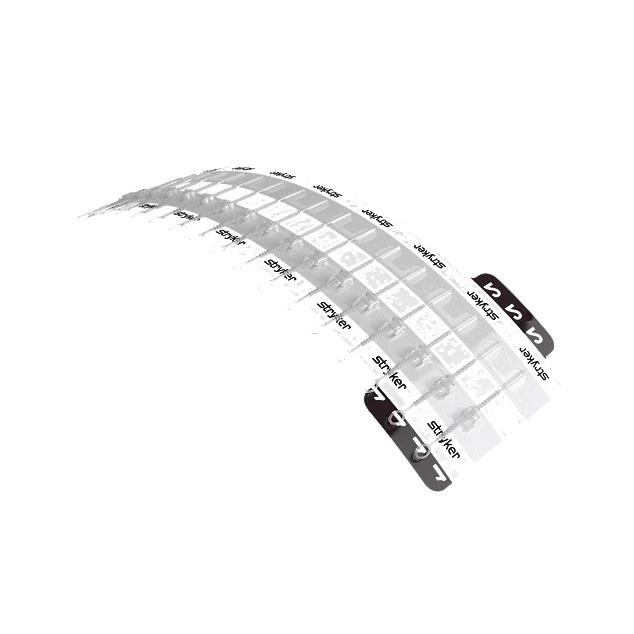MagnetOs™ is a bone graft like no other: thanks to its NeedleGrip™ surface technology, it grows bone even in soft tissues.* This surface technology provides traction for our body’s vitally important ‘pro-healing’ immune cells (M2 macrophages).†‡ [1,2]
This in turn, unlocks previously untapped potential to stimulate stem cells – and form new bone throughout the graft.†§[3-6]

1. Duan, et al. eCM. 2019;37:60-73.
2. Van Dijk, et al. eCM. 2021;41:756-73.
3. Van Dijk, et al. JOR Spine. 2018;e1039.
4. Van Dijk, et al. J Biomed Mater Res. Part B: Appl Biomater. 2019;107(6):2080-2090.
5. Van Dijk, et al. Clin Spine Surg. 2020;33(6):E276-E287.
6. Data on file.
5. Van Dijk, et al. Clin Spine Surg. 2020;33(6):E276-E287.
6. Data on file.
2. Van Dijk, et al. eCM. 2021;41:756-73.
6. Data on file.
2. Van Dijk, et al. eCM. 2021;41:756-73.
3. Van Dijk, et al. JOR Spine. 2018;e1039.
4. Van Dijk, et al. J Biomed Mater Res. Part B: Appl Biomater. 2019;107(6):2080-2090.
5. Van Dijk, et al. Clin Spine Surg. 2020;33(6):E276-E287.
6. Data on file.
12. Yu, et al. J Cell Biochem. 2016;117(7):1511-1521.
13. Ligouri, et al. Cell Mol Immunol. 2021;18(3):711-722.
6. Data on file.
13. Ligouri, et al. Cell Mol Immunol. 2021;18(3):711-722.
14. Zhang, et al. Cell Tissue Res. 2017.
15. Arosarena, et al. J Cell Physiol. 2011;226(11):2943-2952.
6. Data on file.
13. Ligouri, et al. Cell Mol Immunol. 2021;18(3):711-722.
The growing body of science behind NeedleGrip is called osteoimmunology. But for surgeons and their patients it means one thing: a more predictable fusion.†¶[5,6]
MagnetOs is proven to be equivalent to the gold standard of autograft for spinal fusions.[2,4,5,16] It has been used in more than 25,000 fusion surgeries to date and is supported by an unprecedented blend of scientific, pre-clinical and clinical studies through Project Fusion: our global research program, where science and clinical evidence meet.
Kuros is dedicated to reliably translate evidence from benchtop through to patient. To see how, review our extensive list of studies including peer-reviewed results from our latest Level I clinical trial published in Spine.[16]
2. Van Dijk, et al. eCM. 2021;41:756-73.
4. Van Dijk, et al. J Biomed Mater Res. Part B: Appl Biomater. 2019;107(6):2080-2090.
5. Van Dijk, et al. Clin Spine Surg. 2020;33(6):E276-E287.
16. Stempels, et al. Spine. 2024;49(19):1323-1331.
16. Stempels, et al. Spine. 2024;49(19):1323-1331.













